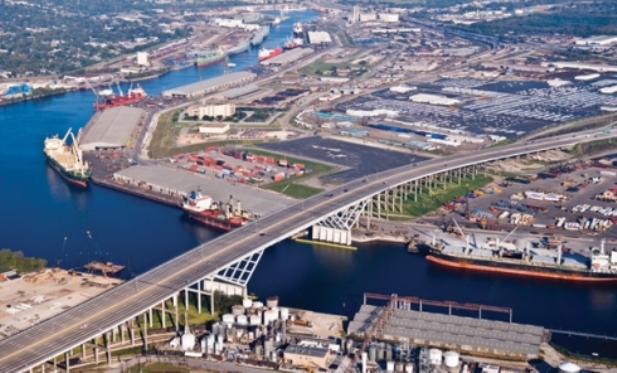 Port Houston closed for four days after the hurricane and reopened on September 1.
Port Houston closed for four days after the hurricane and reopened on September 1.
HOUSTON—In addition to its devastation on Greater Houston, Harvey’s impact was national in scope. On August 30, more than a quarter of the nation’s refining capacity (about 5 million barrels per day) was offline because of Harvey. Port Houston, the largest US port in foreign tonnage and home to the nation’s largest petrochemical complex, closed for four days after the hurricane and reopened on September 1. Barbours Cut and Bayport Container Terminals handled 5,000 gate transactions, and vessel activity and gate operations continued seamlessly through that weekend. Since then, container vessels have been serviced at Barbours Cut and Bayport terminals, handling thousands of additional gate transactions, according to NAI Partners.
Most refineries along the Texas Gulf Coast returned to pre-storm fuel-making rates shortly thereafter. Retail gasoline prices averaged $2.68 per gallon on September 4, 28 cents per gallon higher than prices prior to the storm. Supply disruptions and refinery outages caused by Hurricane Harvey continue to affect gasoline supply and prices, particularly along the East Coast and the Gulf Coast, where gasoline prices reached 40 cents higher per gallon in some areas. Overall, national consumers will see an increase in gas prices of about 8 to 10 cents for the next several months.















 Copyright © 2025 ALM Global, LLC. All Rights Reserved.
Copyright © 2025 ALM Global, LLC. All Rights Reserved.